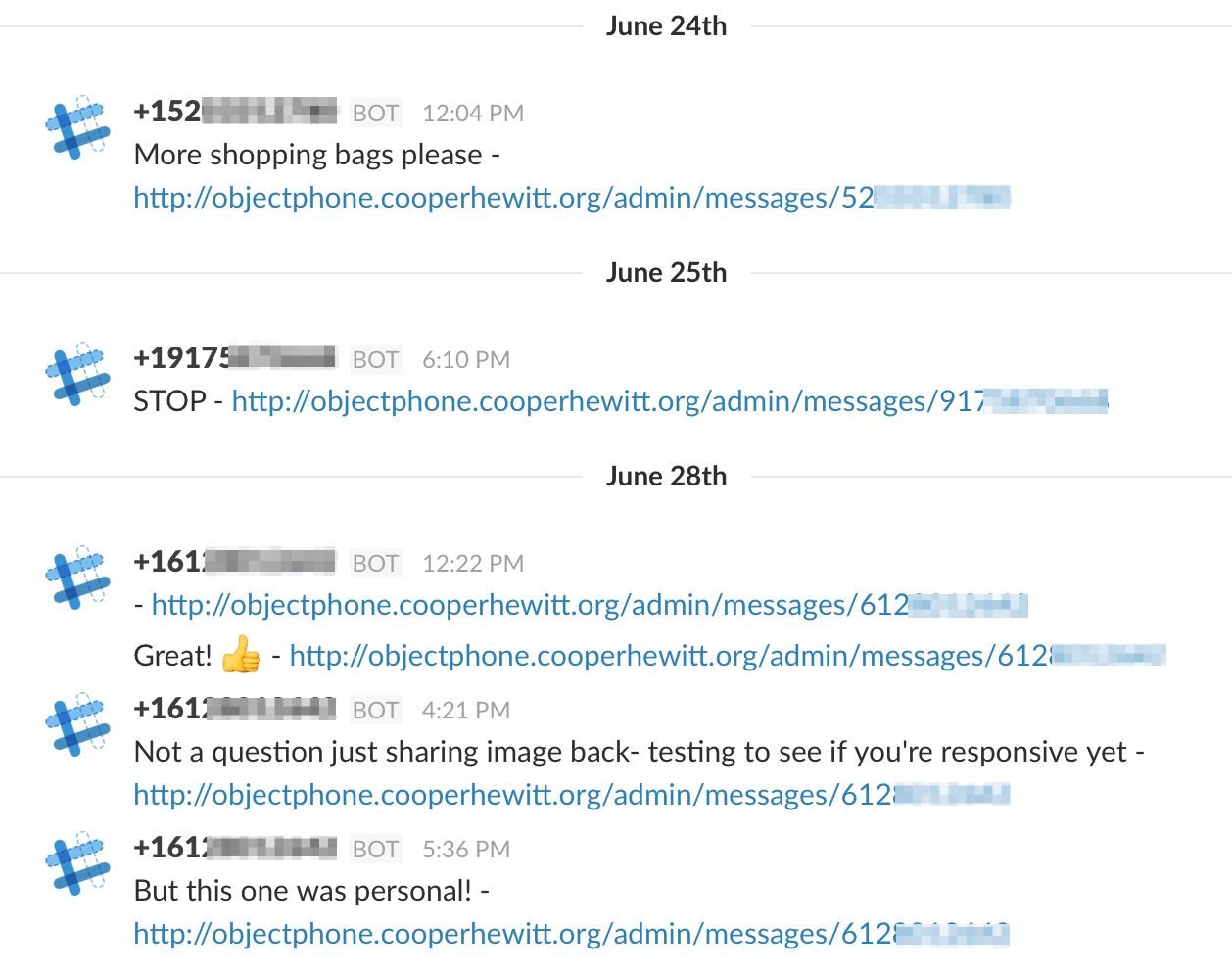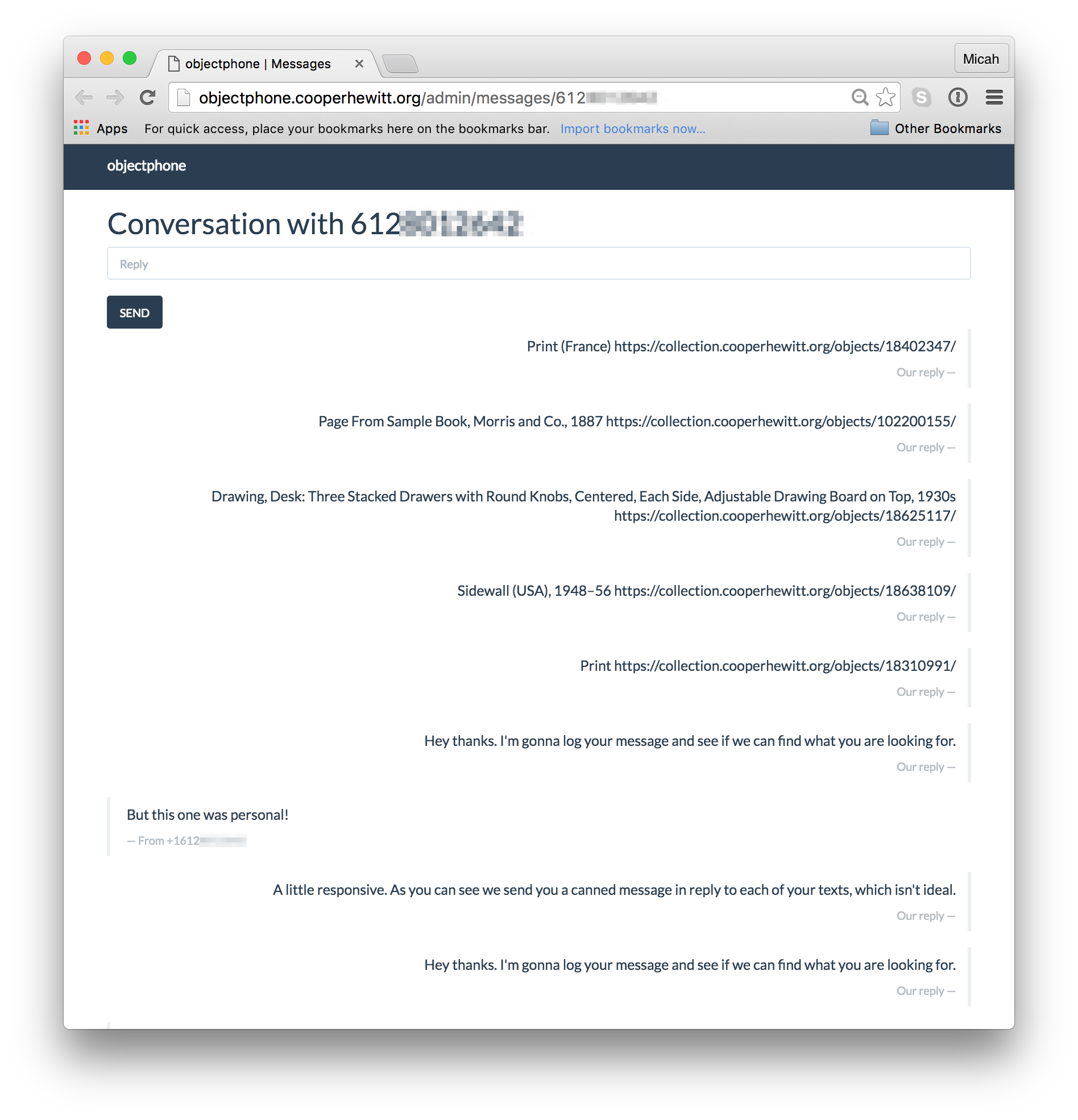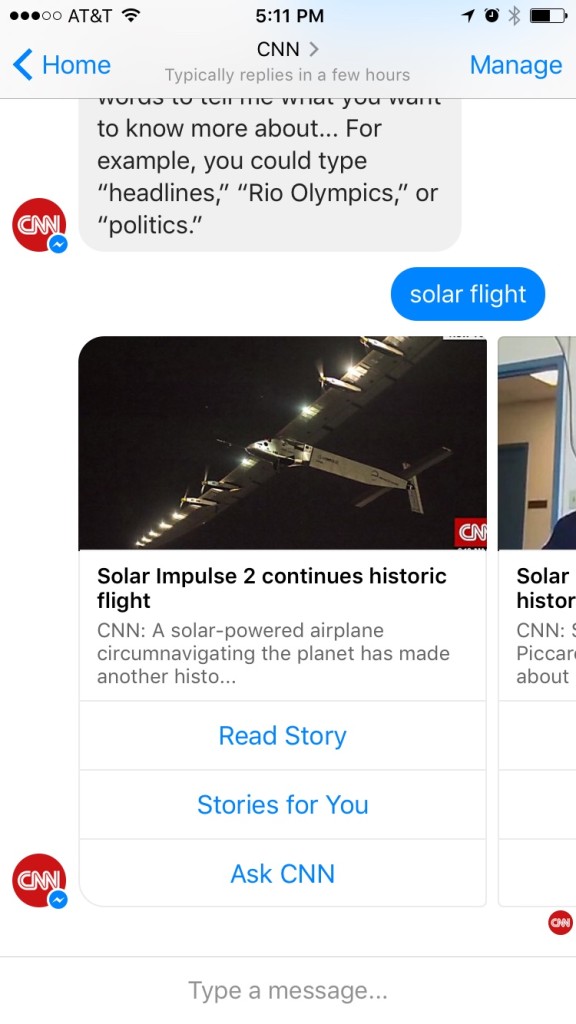Object Phone is a project that started small, took less than a day to code, and consisted of about a page of code. Initially it was just an experiment–a way for me to explore a new interface to our API. Object Phone allowed users to call or text objects in our collection, and receive some kind of response. It was met with mild fanfare.
Next, I was curious about using Object Phone in our galleries. I looked towards developing some better audio content, and we decided to produce a short audio tour of the David Adjaye Selects exhibit. It was somewhat cumbersome to use but an interesting experiment and one of my first “in-gallery beta-tests.” Needless to say, I tried to be as clear as possible that this was an “experiment.”

Later I started thinking about the broader uses for a system like Object Phone. Could it replace an expensive audio guide? Could it be used as an accessibility device? I started to think of many possible uses for the platform, and started to rewrite the code to support multiple outputs. In a way, I was thinking about the code for Object Phone as a mini framework for building voice and text based interactions with our content.
All of this got put on the back burner for a while. Object Phone is after all my little side project. Something I come back to when I need to center myself and let my brain think through a few problems. It’s very much a project I meditate on when I need to do that kind of thing.
About 6 months later I started playing with the code again. I realized it was pretty trivial to deliver images via MMS using Twilio’s API and I had also started to notice that MMS worked pretty nicely on devices like an Apple Watch, and looked pretty good in the notification screen on my iPhone. All of the sudden it was kind of fun again to receive texts from Object Phone. So, I set up a subscription service.
Alpha testers, you can now "ask" ObjectPhone anything you like. Give it shout and a human will reply. https://t.co/BWGupMzoUH #musetech
— Micah Walter (@micahwalter) June 2, 2016
Inspired by a few chatty SMS based apps out there like Poncho and The Edit, I built a simple subscription service that would send random objects and images to subscribers once a day at noon. Again, I set this up quickly, sent out a request for some people to try it out, and started to make realizations.
The main realization I had was that Object Phone had just become a chatbot. To be clear, Object Phone has technically always been a chatbot. You send it messages, and it replies with some response. But now that it sends you something periodically based on your preferences (currently just the preference that you want to continue receiving messages) it seems more like a real chatbot. More importantly, this experiment has started to make me “think” of Object Phone as a chatbot–something I should have likely realized from the start.
I also realized that Object Phone’s chattiness happens in multiple directions. It indeed chats with its subscribers. It can send you messages once a day, and it can reply to your requests for info about objects with ease. But, I also added a back end feature which follows this same line of thinking. If a user sends Object Phone a message that it doesn’t understand, Object Phone asks me for some assistance. Here is the flow:
- A user messages Object Phone something like “Tell me about spanking cat.”
- Object Phone isn’t smart enough yet to decipher the message.
- Object Phone replies “OK, I don’t really understand what you are saying but I’ll ask around and get back to you.”
- Object Phone then sends our Cooper Hewitt Slack channel a message.
- The Slack message contains the user’s phone number, their message, and a link to an admin page where the operator can reply directly to the user.
All of the sudden Object Phone is a conduit between Cooper Hewitt staff and its visitors. It’s talking directly to visitors, but also relaying messages back and forth to more knowledgeable staff when it needs assistance.
What the cool kids are doing
Conversational user experiences are all the rage right now. Facebook has recently opened up their Messenger platform and API to developers, which means anyone can build a simple chatbot on Facebook and reach all their followers with ease. Many other messaging services have open APIs as well. WeChat, LINE, What’sApp and Slack are just a few examples.
It’s pretty clear that messaging apps are increasing in popularity, with users spending much of their days talking on platforms like SnapChat rather than thumbing through their Facebook feeds. Apple too has followed suit by announcing a much upgraded Messages app in their latest update to iOS.
Chatbots have also become much more sophisticated, with huge advancements in Natural Language Processing and Natural Language Understanding. There is now a wealth of information and publicly available code and APIs out there, making it easier than ever to spin up a pretty intelligent chatbot with little overhead.
The Future of Object Phone
My next steps are to make Object Phone more intelligent. It should be able to learn about your tastes and preferences. If you only want to receive objects from our Textiles department, you should be able to say so. If you want to get your daily update at 5am, you should be able to just tell it that.
More importantly, you should be able to interact with more than just objects. Users should be able to find out general info about our museum. Are we open today? How do I get to Cooper Hewitt? Can I buy tickets right here, right now?
Lastly, I’d love to see Object Phone make its way onto the platform of your choice. I think this is a critical next step. SMS is great, and available to nearly anyone with a cell phone, but apps like FB Messenger, WhatsApp, and LINE have the ability to connect a service like Object Phone with a captive audience, all over the world.
I think institutions like museums have a great opportunity in the chatbot space. If anything it represents a new way to broaden our reach and connect with people on the platforms they are already using. What’s more interesting to me is that chatbots themselves represent a way to interact with people that is by its very nature, bi-directional. It presents us with the challenge of conversation, and forces us to listen to our constituents in a very close and connected kind of a way. We should already be doing this.
If you’d like to participate in testing out Object Phone, please go to https://objectphone.cooperhewitt.org and sign up. You will receive an object every day at 12pm EST until you reply STOP.
Also published on Medium.



